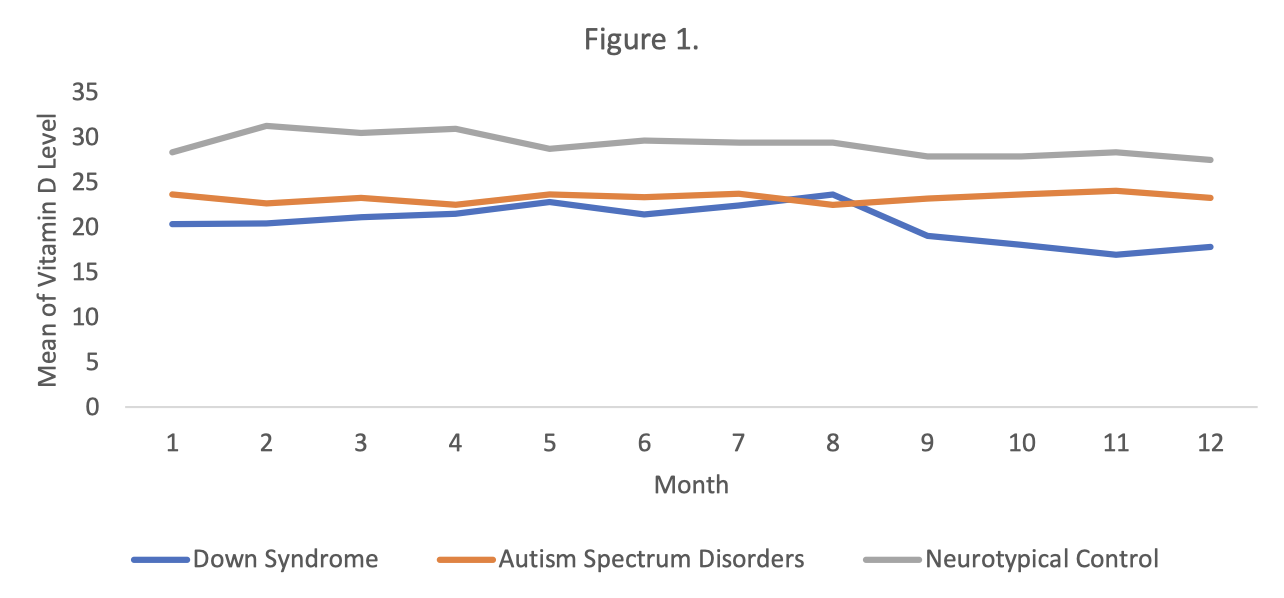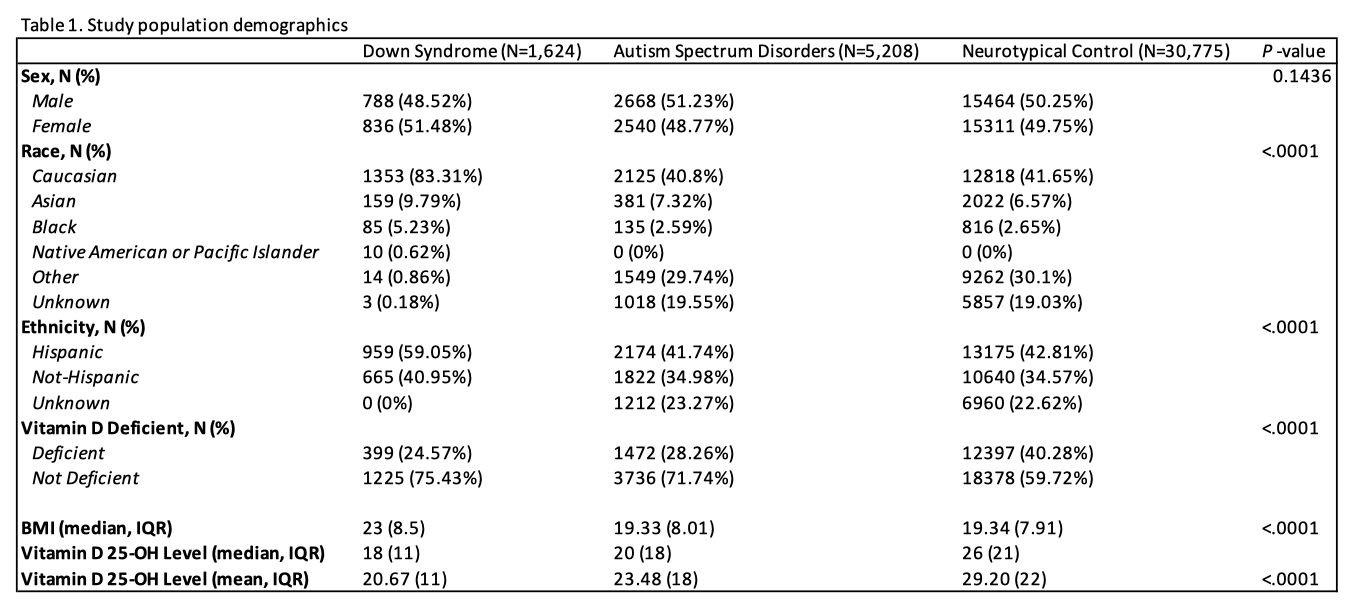Developmental and Behavioral Pediatrics: Developmental Disabilities
Developmental and Behavioral Pediatrics 4
423 - Vitamin D Status in Children with Down syndrome, Autism Spectrum Disorder, and Neurotypical Controls
Publication Number: 423.207
- NB
Natalie K. Boyd, BS
Research Coordinator
Keck School of Medicine of the University of Southern California
Los Angeles, California, United States - MK
Mellad M. Khoshnood, MD (he/him/his)
USC - CHLA
Glendale, California, United States 
Jonathan D. Santoro, MD
Director of Neuroimmunology
Division of Neurology, Children's Hospital Los Angeles and Keck School of Medicine of USC
Los Angeles, California, United States
Presenting Author(s)
Co-Author(s)
Background:
Vitamin D has been reported to be low in persons with Down syndrome (DS), but these studies come from small and homogenous cohorts.
Objective: To assess vitamin D status in a cohort of individuals with DS and compare them to a control group and children with autism spectrum disorder (ASD) and investigate a link between vitamin D status and presence of autoimmune disease and neurologic disorders in persons with DS.
Design/Methods:
A multi-center, retrospective chart review was performed. The first recorded level of any patient aged 1-26 years was used. ICD codes were used to identify patients. Controls were age matched and were excluded if the ICD-10 code was related to a chronic rheumatologic condition. Any participant with a history of neoplasia was excluded. Chi-squared analysis was performed for evaluating the differences between sub-groups. Odds ratios with corresponding 95% CI were used to calculate the likelihood of therapeutic benefit between individuals with neurodiagnostic abnormalities and without.
Results:
Demographic data is reported in Table 1. Vitamin D levels below 30 ng/mL were considered deficient. The controls had the highest vitamin D level (29.20 ng/mL), followed by persons with ASD (23.48 ng/mL), then persons with DS (20.67 ng/mL). For persons with DS, older age was associated with higher levels of vitamin D, an inverse trend for persons with ASD and neurotypical controls. Among children with DS, higher BMI, presence of personal or familial autoimmunity, and neurological disorder diagnosis was associated with lower levels of vitamin D. Across all three groups, persons with Hispanic ethnicity had lower vitamin D levels as compared to those without while race did not impact vitamin D levels. Mean vitamin D level remained constant over the year for each group, except for a small decrease starting in September for persons with DS (Fig. 1). We observed higher mean vitamin D levels in controls, followed by persons with ASD, then persons with DS. Higher incidences of autoimmunity have been reported in individuals with ASD or DS. Since vitamin D plays an immunoregulatory role, deficiency may lead to the development of autoimmunity. Chromosome 21 encodes immunoregulatory genes. The additional chromosomal copy may explain observed lower average vitamin D levels in DS compared to ASD. Individuals with ASD and DS were not significantly impacted by dual diagnosis, potentially due to etiological overlap. Observed lower vitamin D levels for persons with DS and neurological disorder may be explained by vitamin D deficiency causing neurodevelopmental harm.
Conclusion(s): 

.png)
